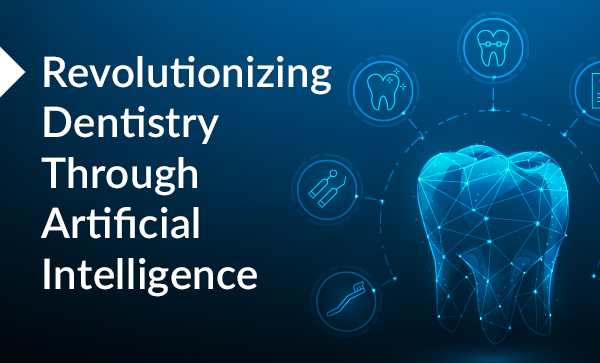
Revolutionizing Dentistry Through Artificial Intelligence
What is AI?
We are living in a world surrounded by Artificial Intelligence (AI). From virtual assistants like Siri and Alexa to large language models like ChatGPT, it’s hard to imagine life without these applications. AI refers to a computer system’s ability to perform tasks that typically require human intelligence, like problem solving and decision making. Considering how widespread AI use has become in our daily lives, have you ever wondered how it’s utilized in dentistry? You might be surprised to learn that AI use in the dental industry is increasing, and is here to stay. In February 2023, the American Dental Association released an article to guide dental professionals as they begin to incorporate the use of AI technology into their offices.
Cavities
One of the most common dental problems is cavities. Traditionally, dentists detect cavities by visually inspecting each tooth during a check-up and by looking for signs of them in x-rays. AI software has been developed to assist dentists in detecting cavities in the earliest stages. The computer programs can analyze and identify potential cavities that might not yet be visible to the naked eye. The software can also compare new and old x-rays to check if a cavity has gotten bigger over time. By detecting cavities sooner, dentists can offer less expensive and less invasive treatment options to patients.
Gum Disease
Similarly, AI has improved the detection of gum disease, which is defined by bone loss around teeth. Dentists diagnose gum disease by looking for red, puffy gums at check-ups and by identifying signs of bone loss in x-rays. The AI software that helps dentists look for cavities can also be used to measure bone levels around teeth. AI applications can compare new and old x-rays to determine if a patient’s gum disease is stable or getting worse. Noticing changes in bone levels earlier will ultimately improve patients’ health and lower their risk for late-stage gum disease.

Administration
AI has also made administrative tasks more manageable in the dental industry. Dental offices manage large volumes of patient data, insurance claims, and appointments. Manually overseeing all of this can be time-consuming and prone to errors. However, some office duties can be completed by AI software. By allowing AI to schedule appointments or submit insurance claims, for example, dental staff will have more time to focus on what they love most: patient care!
Sum It Up, AI
The advancement of technology has brought big changes to the dental industry, and even to our own organization. In fact, we let AI write the conclusion to this newsletter. “As an AI language model, I have written a summary about the increasing use of AI. The advancement of technology has had a significant impact on the dental industry, and AI is becoming increasingly prevalent in dental practices. Although AI can improve efficiency and accuracy in administrative tasks and early disease detection, it is important to note that it is still no substitute for the expertise and recommendations of a trained dentist.”

